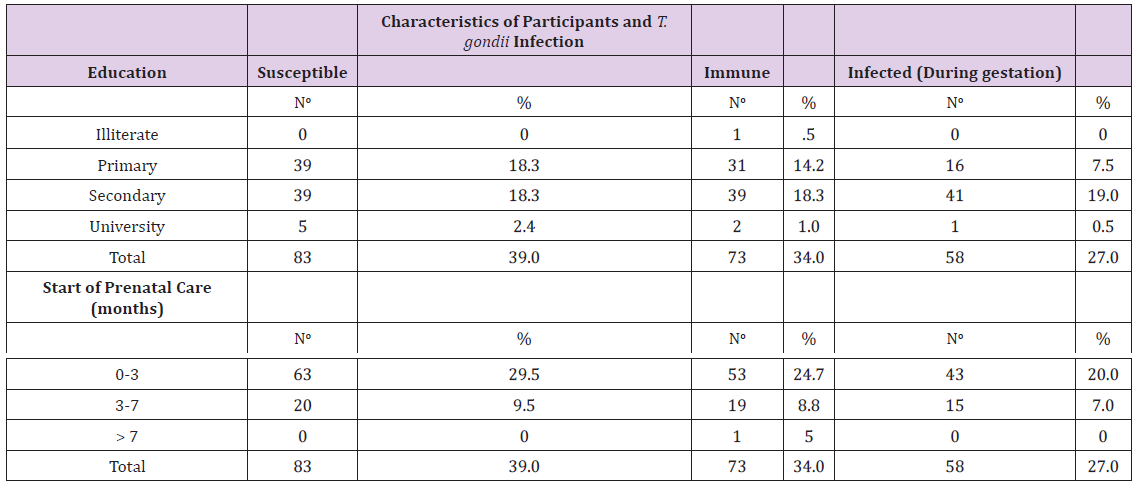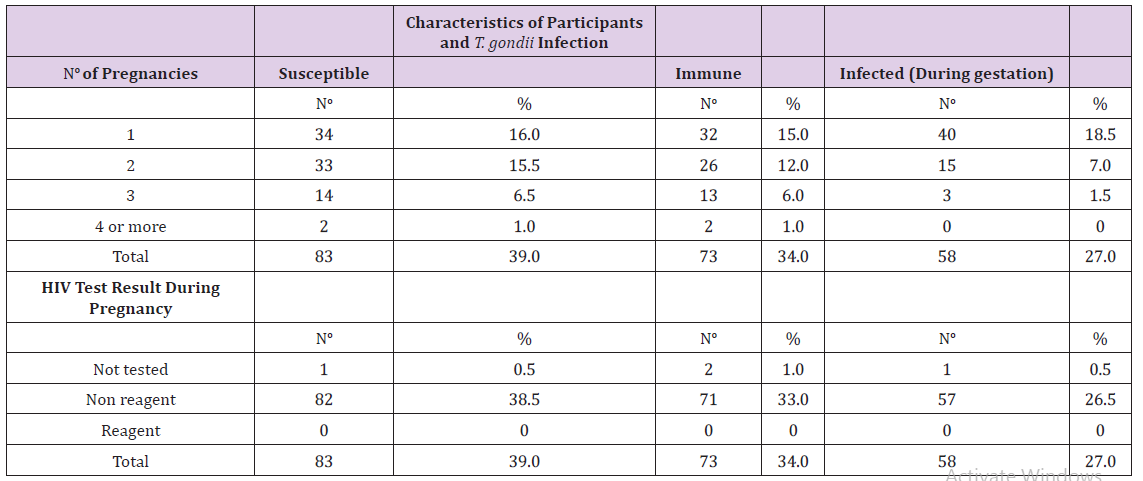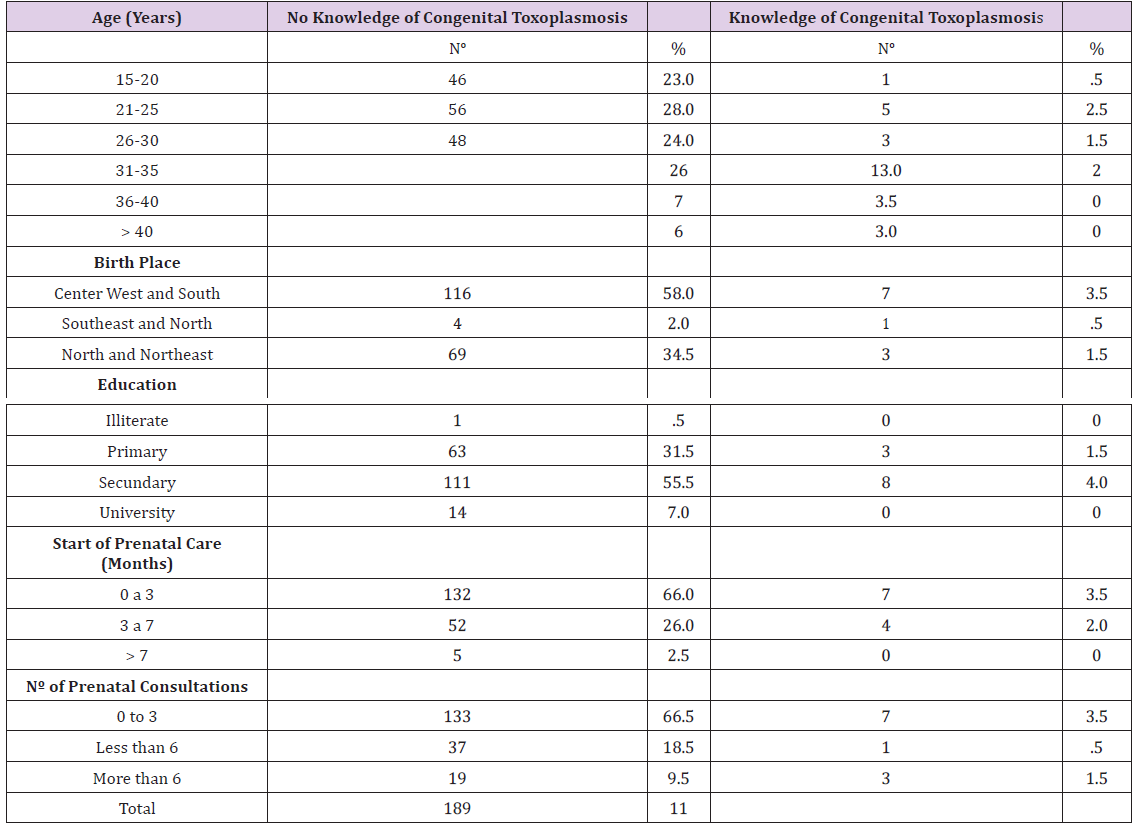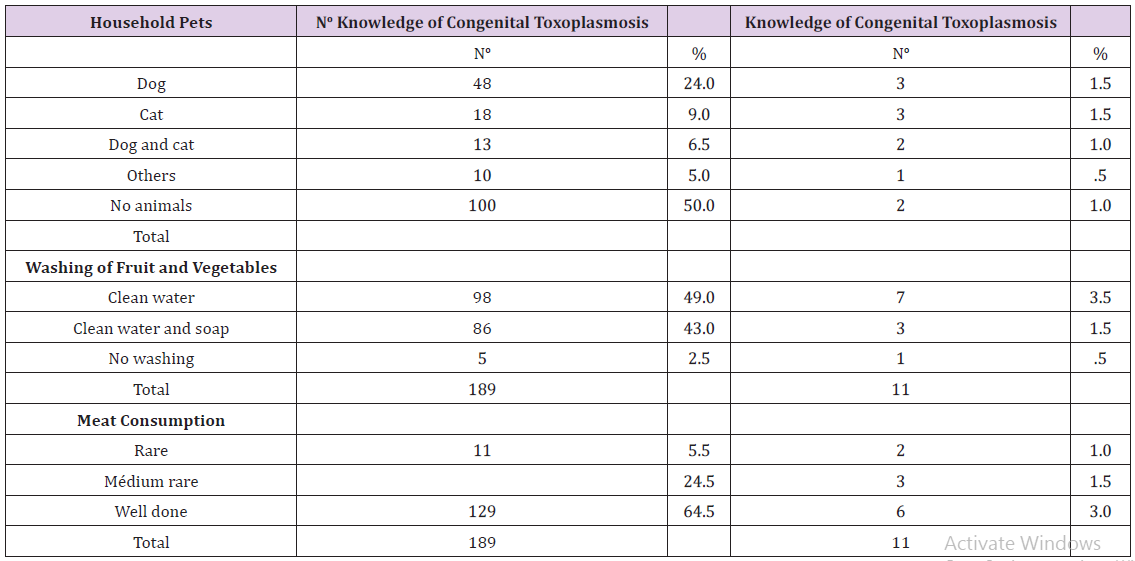Toxoplasmosis Frequency in Pregnant Women Attending Regional Health Centers in the City of Samambaia of the Federal District, Brazil
Introduction
Toxoplasmosis is a disease caused by Toxoplasma gondii with cosmopolitan distribution [1]. This disease affects various mammals: cats, pigs, rodents and cattle as well as humans [2-4]. It is a serious public health problem, possibly causing irreversible damage or even death for the fetuses of pregnant women and immunocompromised individuals [5-7]. The prevalence of toxoplasmosis varies from 20 to 90% in the world population but with different geographical distribution from one region to another. It depends on risk factors, such as food, water treatment, environmental exposure and cultural habits [8,9]. Pregnant women who have acquired toxoplasmosis transmit the disease to fetuses, causing miscarriages, stillbirths, neurological and ocular sequelae [10,11]. There are three infectious stages of T. gondii: the tachyzoites (in groups or clones), the bradyzoites (in tissue cysts), and the sporozoites (in oocysts). These are intracellular, preferably in cells of the mononuclear phagocytic system [12-14]. In the sexual stage they infect the intestines of young cats. In the asexual stage the eye tissue, muscle and brain of birds and mammals, including man, are infected [15-17]. Transmission of T. gondii is oral, with the ingestion of cat feces containing oocysts that had been present in soil, water, sand boxes or unwashed fruit and vegetables. Infection can also occur by eating raw or undercooked meat containing cysts with bradyzoites, or tachyzoites in milk, or by laboratory accidents, blood transfusions or it may be transplacental [18,19].
Results were collected from 214 women that had information about toxoplasmosis stored in the systems of the health centers in the city of Samambaia in the Federal District of Brasília, DF. The prevalence of antibodies anti-T. gondii was investigated in these women. The serologic methods applied in the tests of the secondary data, in the diagnosis of gestational toxoplasmosis, were fluorescent immunoassay test (ELFA) and immunoenzymatic (ELISA). The 200 women who were interviewed in the research were attending or had attended prenatal programs and agreed to participate in the study by signing the Informed Consent (IC). In this group the data were collected from interviews and a questionnaire with objective questions about socio-economic aspects, prenatal conditions, hygiene and diet.
Toxoplasmosis Prevalence in Pregnant Women
The medical records of 214 pregnant women included: 70 in 2011, 72 in 2012, 65 in 2013 and seven in 2014. These women were of different ages and different periods of pregnancy. The results obtained by ELFA and ELISA permitted classification of these women into three groups: susceptible, immune or infected by T. gondii during pregnancy. Of the 214 records studied, 83 were negative for IgM and IgG anti-T. gondii thus these women were likely to contract toxoplasmosis. Seventy-three of the women were IgG positive and had been infected by T. gondii before pregnancy. There were 58, who tested positive for IgM anti-T. gondii infection and had acquired it during pregnancy. The ages of these women are described in Table 1. Susceptible women, those who were immune and those who had acquired toxoplasmosis during pregnancy, are distributed according to levels of education and early prenatal care (time in months) in (Table 2).
 Note: No: number; %: Percentage
Note: No: number; %: PercentageTable 2: Distribution of information from medical records of pregnant women attending health centers regarding schooling and time of starting prenatal care, 2011 to 2014.
 Note: No: number; %: Percentage.
Note: No: number; %: Percentage.Susceptible women, those who were immune and those who had acquired toxoplasmosis during pregnancy, are distributed according to the number of pregnancies and test results for HIV, in Table 3. Results obtained from the 200 women interviewed in 2014 concerning the degree of knowledge and risk factors for acquisition of gestational toxoplasmosis are presented in Table 4. These women originated from different regions of Brazil including the Midwest, North and Northeast. They are distributed according to their levels of education. Of the 200 women, only eight had completed high school. Three had completed primary school and had knowledge of congenital toxoplasmosis. The time that these women started prenatal care is grouped and identifies the number of times they sought a professional for prenatal care (Table 4). The degree of knowledge of toxoplasmosis and predisposing factors for acquisition of the disease during pregnancy including sanitary conditions, presence of household pets, gardening or garden activities, washing habits for fruits and vegetables and consumption of meat is described in Table 5.
 Note: No: number; %: Percentage.
Note: No: number; %: Percentage.Table 4: Distribution of information from pregnant women interviewed and attending health centers regarding knowledge of congenital toxoplasmosis, age, birth place, education, early prenatal care (in months), and number of prenatal consultations in 2014.
 Note: No: number; %: Percentage.
Note: No: number; %: Percentage.Table 5: Distribution of 200 pregnant women attending health centers regarding hygiene and dietary habits, 2014.
 Note: No: number; %: Percentage.
Note: No: number; %: Percentage.Infection by gestational toxoplasmosis was found in 83 (38.8%) of the cases of the women susceptible to infection, of the present study. These results differ from the results of a study in the State of Mato Grosso do Sul, where 91.6% of pregnant women were immune, of 32.512 pregnant women [31]. In a study conducted in Porto Alegre, RS, the majority of 1,261 pregnant women studied were immune [32]. These results suggest that the prevalence of toxoplasmosis in pregnant women varies from one geographic region to another, possibly due to differences related to culture, hygiene, and diet [33]. The most prevalent age for toxoplasmosis infection, for all pregnant women: susceptible, immune or infected, during pregnancy was between 21 and 25. In a similar study conducted in Mato Grosso do Sul, the average age was 23 for women infected during pregnancy [31]. In Rolândia, Paraná, the prevalent age was 36-45 for immune mothers [34]. All the surveys reviewed show that most human cases of primary toxoplasmosis occur in young people. In Brazil, there are several studies that demonstrate the importance of education as a protective factor for preventing toxoplasmosis.
There are also studies that discuss the importance of creating health education programs to teach the use of hygiene and dietary habits in order to prevent the disease in pregnancy [35,36]. The results found in this study did not identify education as a risk factor for congenital infection because most women infected during pregnancy had only primary or a secondary school education. In the present study, it was observed that most of the women began prenatal care in the first trimester, independent of whether they have knowledge of congenital toxoplasmosis, or had been instructed, in previous prenatal care, about the disease. In a similar survey conducted in Goiânia, 54.6% of the pregnant women surveyed were also screened in the first quarter, thus receiving more information and more prenatal care than women who began prenatal care in the last two quarters [35]. In terms of numbers of pregnancies, the numbers of susceptible and immune pregnant women were similar among those in the first or second pregnancy.
The prevalence of gestational toxoplasmosis among the pregnant women of both samples who received and prenatal care at the health care clinic of Samambaia was high. This fact was related to low levels of knowledge, among the women interviewed, about the disease due to their youth and their little education. The results of our study suggest the need for greater disclosure of toxoplasmosis and transmission. Considering that many women have low education and poor access to the means of formal information, information on toxoplasmosis for pregnant women must be the responsibility of multidisciplinary health teams. Health professionals in prenatal program need to know present and exemplify actions and services aimed at the promotion and prevention of toxoplasmosis. The humanized and systematic assistance to patients in their first as well as in subsequent pregnancies can minimize gestational toxoplasmosis and avoid the numerous consequences of this disease of the fetus.
More BJSTR Articles : https://biomedres01.blogspot.com


No comments:
Post a Comment
Note: Only a member of this blog may post a comment.